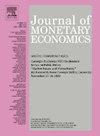自动化与超级明星企业的崛起
IF 4.3
2区 经济学
Q1 BUSINESS, FINANCE
引用次数: 0
摘要
我们提供的经验证据表明,超级明星企业的崛起与自动化有关。我们在一个具有异质企业和可变加价的一般均衡框架中解释了这种经验联系。企业可以采用纯劳动力技术,也可以通过支付每期固定成本,采用同时使用工人和机器人的自动化技术。固定成本导致了自动化的规模经济效应,规模越大、生产率越高的企业越有可能实现自动化。自动化提高了劳动生产率,使这些大型企业得以进一步扩张,从而提高了产业集中度。由于机器人可以替代工人,因此自动化程度的提高对销售集中度的影响大于对就业集中度的影响,这与经验证据是一致的。根据我们的校准,适度的机器人补贴可以缓解加价扭曲,并通过刺激自动化投资改善福利,使总产出更接近有效水平。本文章由计算机程序翻译,如有差异,请以英文原文为准。
Automation and the rise of superstar firms
We provide empirical evidence suggesting that the rise of superstar firms is linked to automation. We explain this empirical link in a general equilibrium framework with heterogeneous firms and variable markups. Firms can operate a labor-only technology or, by paying a per-period fixed cost, an automation technology that uses both workers and robots. The fixed costs lead to an economy-of-scale effect of automation, such that larger and more productive firms are more likely to automate. Automation boosts labor productivity, allowing those large firms to expand further, raising industry concentration. Since robots substitute for workers, increased automation raises sales concentration more than employment concentration, consistent with empirical evidence. Under our calibration, a modest robot subsidy mitigates markup distortions and improves welfare by stimulating automation investment, bringing aggregate output closer to the efficient level.
求助全文
通过发布文献求助,成功后即可免费获取论文全文。
去求助
来源期刊

Journal of Monetary Economics
Multiple-
CiteScore
7.20
自引率
4.90%
发文量
90
审稿时长
74 days
期刊介绍:
The profession has witnessed over the past twenty years a remarkable expansion of research activities bearing on problems in the broader field of monetary economics. The strong interest in monetary analysis has been increasingly matched in recent years by the growing attention to the working and structure of financial institutions. The role of various institutional arrangements, the consequences of specific changes in banking structure and the welfare aspects of structural policies have attracted an increasing interest in the profession. There has also been a growing attention to the operation of credit markets and to various aspects in the behavior of rates of return on assets. The Journal of Monetary Economics provides a specialized forum for the publication of this research.
 求助内容:
求助内容: 应助结果提醒方式:
应助结果提醒方式:


